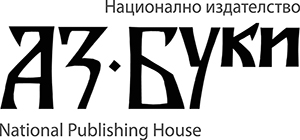Ivaylo Staribratov
Plovdiv University Paisii Hilendarski (Bulgaria)
https://doi.org/10.53656/ped2025-2.02
Abstract. In the present study, social-emotional factors in mathematics teaching are examined through the prism of motivational theory of self-determination. Various concepts of the influence of teachers’ emotional support on students’ motivation and their achievement in mathematics have been examined. The research found that social and emotional support from mathematics teachers is one of the significant factors positively influencing students’ internal motivation and confidence in solving tasks. Our research found out that social and emotional support from teachers in mathematics is one of the significant factors positively affecting students’ internal motivation and confidence in solving tasks. The study was conducted among first-year students at FMI Plovdiv, Bulgaria. The basis for this was to analyze their attitude on several motivational issues, one of which was the influence of teachers and their support for learning mathematics. The results showed that the teacher and his motivation directly influence the students. A highly motivated and well-prepared methodically and professionally teacher is the basis for a highly motivated student.
Keywords: motivation; mathematics education; social-emotional; teaching
Влезте в системата, за да прочетете пълната статия


